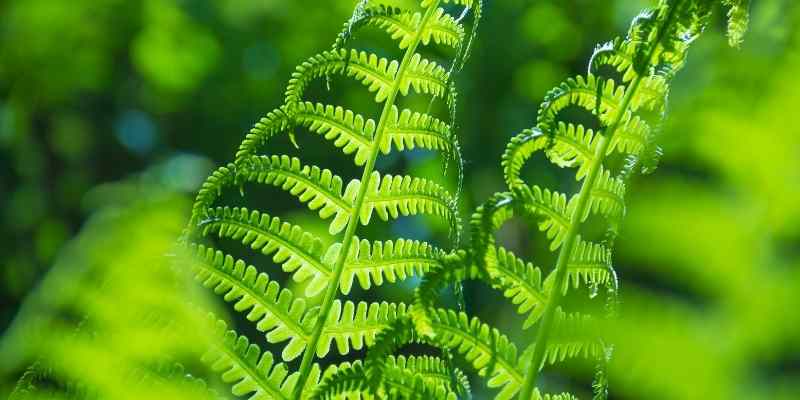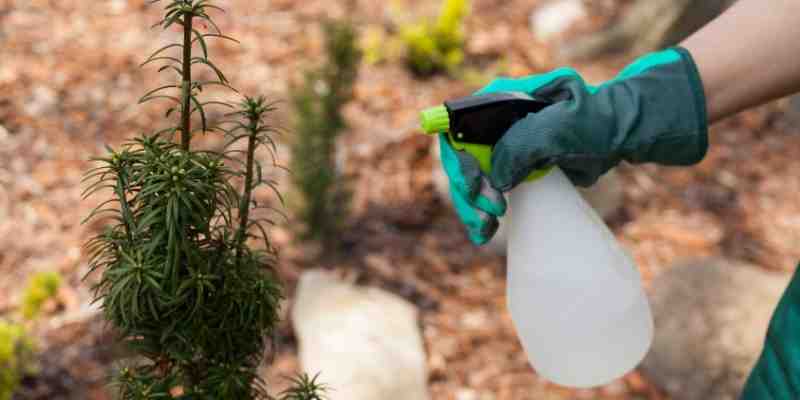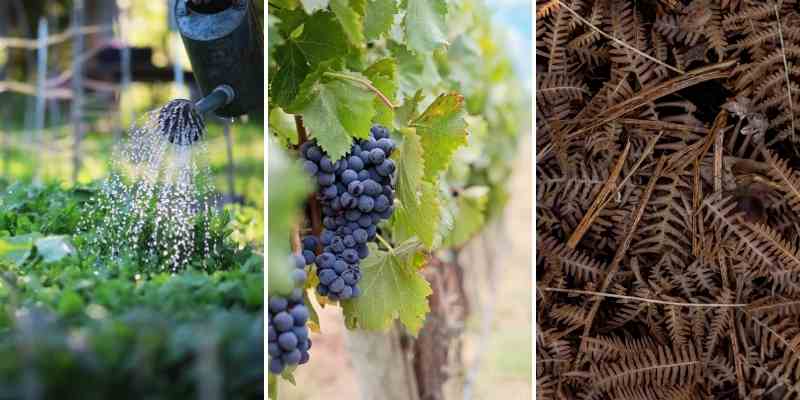Fern manure is used as an insect repellent, particularly against aphids, slugs and snails, and as a curative or preventive treatment against certain fungal diseases (powdery mildew, rust). It also makes an excellent organic fertiliser and compost activator. It's a natural, homemade alternative for caring for your plants, whether in the vegetable garden or ornamental garden. Ferns are versatile plants, serving as insecticides, insect repellents, antifungals and fertilisers.
Discover how to prepare an entirely natural fern manure and use it effectively, either neat or diluted!

The benefits of a simple fern will surprise you!
Required Equipment
To make your fern manure, you'll need:
- A pair of secateurs
- 2 buckets or other non-metallic containers to avoid oxidation (one for preparation, the other for filtration)
- A clean cloth or piece of sheet
- Potato nets
- A stick
- Two opaque, airtight 5-litre containers or empty milk bottles
- A pair of gardening gloves
- A funnel
- Kitchen scales
- A tablespoon
Which Fern to Use?
It's made from wild fern leaves. The Bracken fern, Latin name Pteridium aquilinum (also called the Great fern) or common fern, is best suited for making manure. This vigorous fern is rarely cultivated in gardens as, once established, it quickly becomes uncontrollable and is often considered a weed. It grows spontaneously, even colonising our woodlands, forest edges or wild paths. Take advantage of a woodland walk to gather your harvest! As it's not a protected species, picking is permitted – even recommended – helping with forest management without harming nature. The Male fern (Dryopteris filix-mas) has the same properties.
When to Make Fern Manure?
Harvesting is best done between June and mid-August when the ferns are still green. Wear gloves as the fronds can be sharp and harvest them with secateurs. Avoid picking fronds with small brown balls underneath the leaves – these are spores that allow the plant to reproduce, unless you want them seeding wherever you apply the manure.

Ideally, gather your harvest during a woodland walk...
The Recipe
Fern manure is obtained by fermenting the plant in cold water. Simply remember this ratio:
- 1 kg of fresh fern leaves
- 10 litres of rainwater
You can adjust these quantities according to your needs while maintaining the same proportions.
Preparing the Manure
Preparation takes about two weeks. The outdoor temperature should be at least 15°C but below 25°C – if it's too hot, the manure may rot. If using tap water, let it stand for 48 hours to allow the chlorine to evaporate.
- Start by weighing your fern leaves using kitchen scales
- For the required weight, either roughly chop the fresh fern leaves with secateurs (wearing gloves) or place them whole in one or more large potato nets for easier filtration later
- Put them in your bucket
- Pour 10 litres of soft water over the ferns, mix well then cover the bucket with the cloth
- Place in a shady, cool spot to avoid putrefaction and away from your home as the manure may emit an unpleasant odour
- Leave to steep for about 15 days
Stirring and Filtration
Remember to stir the mixture once daily for about ten minutes with a stick to aid fermentation.
Fermentation time depends on ambient temperature, taking approximately 10-15 days. The manure is ready when no more bubbles appear on the liquid's surface after stirring. It's then time to filter it to prevent putrefaction.
- Remove the fern leaves and add them to compost or use as slug mulch
- Stretch a cloth over the second container, securing it with string under the bucket's rim, then pour the manure through this fabric
- You can scrape the cloth lightly with a tablespoon to speed up drainage
- You should obtain a clean liquid, free from impurities, especially if using in a sprayer
- Using a funnel, transfer the manure to your containers or bottles and screw the lids on tightly
How to Store Your Manure
Stored away from heat and light in a cool place, your fern manure can keep for a year. If the container swells, don't worry – simply open it to release fermentation gases.
When and How to Use Fern Manure in the Garden?
Fern manure can be used from April-May until September, or generally whenever plants need it and treatment is required. Avoid applying it when rain or storms are forecast, as water would wash it away. Ideally, spray early morning or evening when the sun sets. As UV rays degrade this natural concentrate's active ingredients, never spray in full sun.
Depending on use, this preparation can be applied neat or diluted with rainwater. Generally, it's used at 5-10% dilution. Once your diluted manure is ready, place it in a sprayer or watering can. Nearly all plants can benefit. It can be applied to vegetable gardens, orchards and ornamental gardens alike. Fern manure works both preventively and curatively.

How to Apply?
- Preventive action: 5% dilution (10 cl neat manure to 5 litres water) or 10% (1 litre neat manure to 10 litres water)
- Curative use: spray neat manure on diseased plants. Repeat treatment twice weekly for two weeks.
- As foliar spray: coat leaves, underside and top
- As watering: apply directly to the base of affected plants
Why Use It?
- Against aphids and other pests: fern manure is a broad-spectrum repellent. Spray this 5% dilution on vegetable leaves, fruit trees or flowering plants every fortnight to deter black and green aphids, vine leafhoppers, scale insects and red spider mites. For severe infestations, spray neat manure on affected plants and repeat weekly if needed. Add a tablespoon of black soap (15g/litre) to boost effectiveness.
- Against soil larvae: preventively, particularly against wireworms (potato pests), water the soil with 10% diluted fern manure before planting tubers. Repeat weekly then plant. Fern manure also works against many soil parasites.
- Against slugs and snails: decomposing fern leaves release formaldehyde, a chemical compound that repels and poisons gastropods. Spray around vulnerable plants' bases (without excess) or spread fern mulch.
- Against fungal diseases: fern manure prevents and treats certain fungal diseases like rust and powdery mildew: spray neat on affected plants. Repeat regularly in hot, humid weather – conditions favouring fungal growth.
- As organic fertiliser: ferns are rich in nitrogen, phosphorus, potassium, silica and calcium. This manure is excellent for fertilising and stimulating root development. Make a 10% dilution in a watering can and water around fruit and vegetable bases at planting time, then regularly throughout growth, roughly every fortnight. It's also a superb compost activator.

Fern manure is highly effective in vegetable gardens and vineyards. Don't hesitate to mulch sensitive plants with ferns too.
→ Discover our permaculture video with Olivier and Pascal from Lessines
































Comments